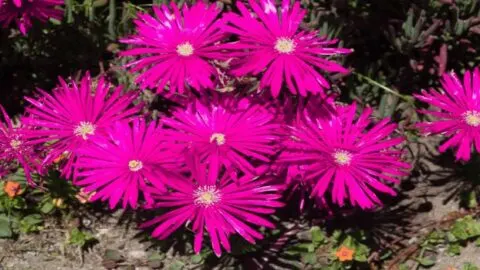You are looking for an Ice plant care in pots guide. This article is about the Delosperma cooperi plant and its care.
When you hear about Ice Plants, you might think of a flora that can tolerate the frosty continent of Alaska. You may be surprised to find that it’s quite the opposite.
Ice Plants refer to a family of succulents that thrive alongside the coastal regions of Australia, South Africa, the Mediterranean, and California in the United States.
The Ice Plant family, or Aizoaceae, are all succulents. This name is Greek for “Stone” and “face,” according to Napa Master Gardener Column.

| Species | Delosperma cooperi |
| Synonyms | Hardy Ice Plant, Trailing Iceplant and Cooper's Ice Plant |
| Family | Aizoaceae |
| Genus | Delosperma |
| Growth | Spreading, Mat-forming |
| Height | 0.25 feet |
| Width | 2.0 feet |
| Soil | Well-draining soil mix |
| Watering | Water every 7-14 days |
| Light | Full sun |
| Temperature | 5500°F - 75.0°F (10°C - 24°C) |
| Humidity | 40.0% - 60.0% |
| Fertilizer | Monthly |
| Propagation | Stem cuttings, Division |
| Toxicity | Non-toxic to cats, dogs and humans |
Table of Contents
Ice Plant Care in Pots
To care for ice plants in pots, provide well-draining soil. Full sun is ideal. Water once a week when the soil is dry to the touch. The optimal temperature is 50-75°F (10-24°C). Provide a humidity of 40% or less. Fertilize using a balanced fertilizer once a month.
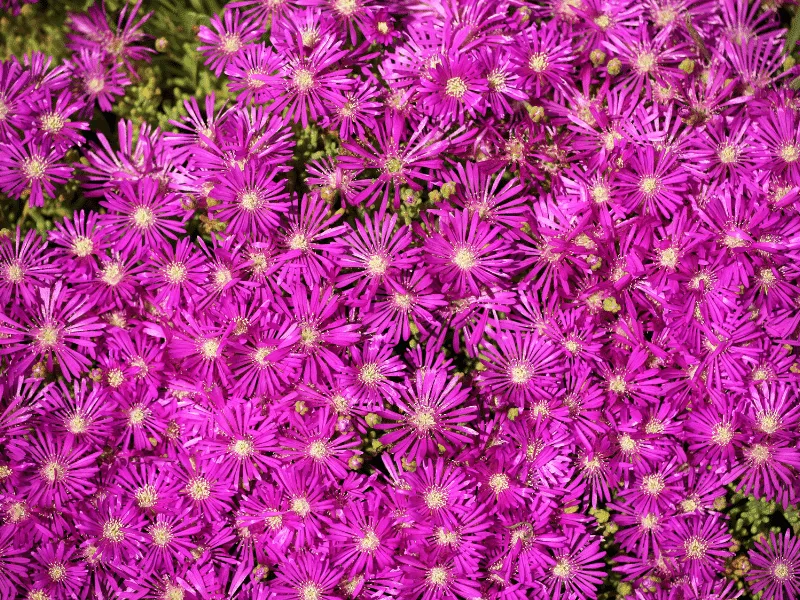
Grow Delosperma cooperi succulents indoors and outdoors
Delosperma makes a great ground cover for rock gardens and can be grown as a perennial evergreen in drier climates. But you can also grow Delosperma cooperi in plant pots and even indoors. Learn about how to care for these hardy ice plants.
Planting Ice plants
When planting Delosperma cooperi indoors or in pots, use a pot with drainage holes. Ice plants need good drainage.
Plant Delosperma cooperi outdoors in mid-summer and ensure substantial mulching before winter arrives. This is especially important in colder climates.
In hot climates, fall planting is advised.
Soil
Put your Ice Plant in a container or pot with well-draining soil with neutral pH levels. Use a mixture of sand, gravel, and loam. Aizoaceae plants do not grow well in dense soils.
They prefer well-draining, dry soil. Especially throughout the winter, the soil needs to be kept dry. They are less cold-hardy in wetter conditions.
Light
When growing indoors, please place them in a southern-facing window.
Grow the Hardy Ice Plant in full sun outdoors.
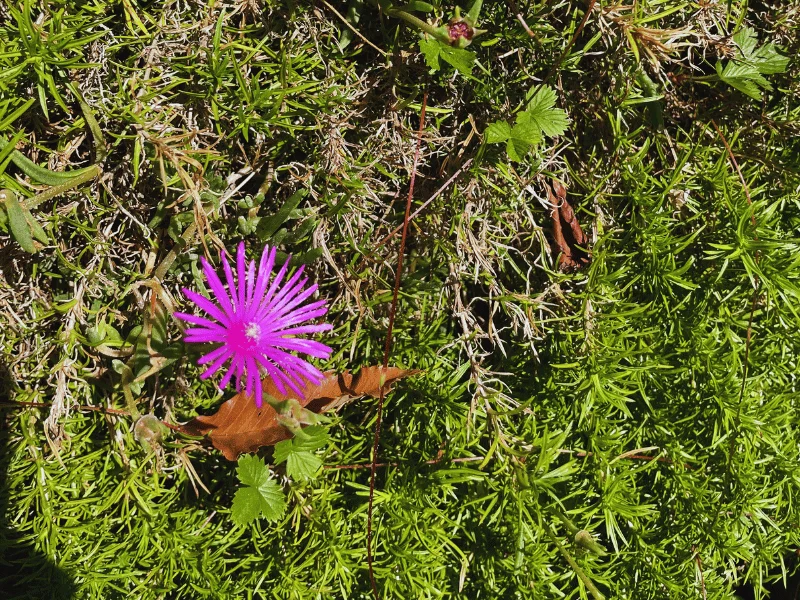
Watering
Water your Trailing Iceplant once a week when the soil dries out. Ice Plants are drought-tolerant plants. They are holding onto water in their leaves. They only need 18 inches per year (46cm) and prefer drought-like conditions.
Temperature
The ideal temperature is between 50-75°F (10-24°C). Make sure temperatures do not drop below 35°F (2°C). They grow in hardiness zones 5-9.
Some varieties are cold hardy, such as the Purple Ice Plant (Delosperma cooperi).
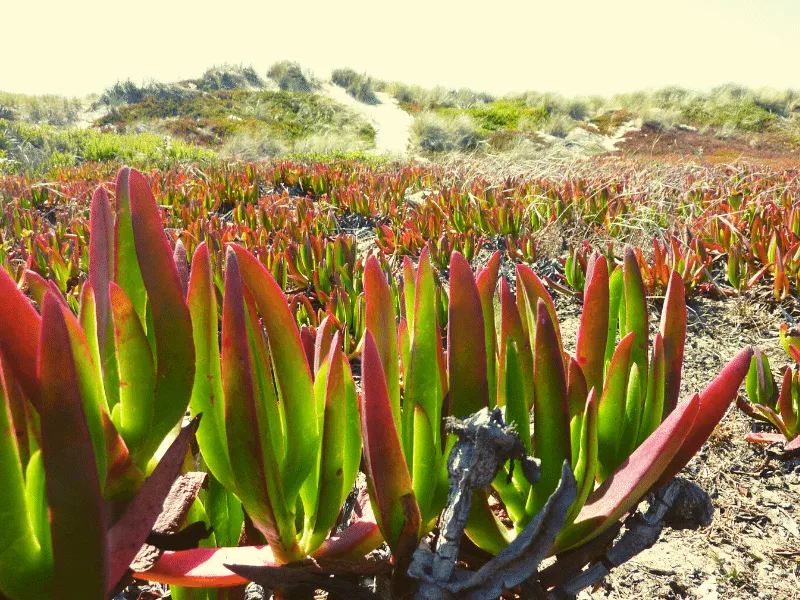
Humidity
A humidity of 40% or less is best. Succulents aren’t fans of environments with high humidity. Root rot and other fungal problems are issues with too much moisture in the air.
Fertilizer
Use a balanced NPK 10-10-10 or 20-20-20 fertilizer monthly in spring and summer. Apart from the main growing season, you do not have to fertilize.
Growth
These plants only reach about six inches in height (15cm) with a width of four feet (1.2m). Aizoaceae is close to a shrub. They can reach this mature state in about a month when their needs are met.
Some species in this family can spread out and become leggy. This can be fixed with regular trimming.
Potting
These plants make great container plants and don’t require repotting. The roots don’t get crowded, and they stay rather small. Only repot in case the soil gets too wet to avoid root rot.
Flowering
The flowers sport a range of colors, from pink to orange to yellow. They produce daisy-like flowers.
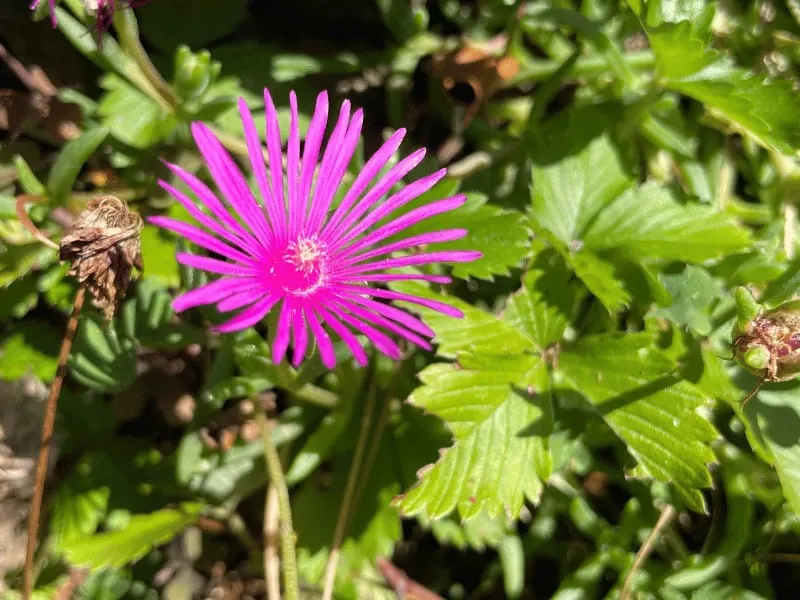
Ice Plant propagation
Ice plants can be propagated through division, cuttings, and seed germination.
Stem cuttings should be taken during the active growing months, generally between spring and fall. This will ensure that the new individuals have a better chance of survival. Take longer stems to increase your propagation success.
Propagation Through Stem Cuttings
- Make an incision on the desired parent plant using scissors or shears. This cut should be around two to four inches.
- Remove leaves on the stem cutting, aside from the top two or three.
- Put your cutting on the counter to air dry for at least a few hours. Leaving it out overnight can be more beneficial.
- Fill a container with fresh potting mix designated for succulents. This pot should have several drainage holes on the bottom. Prepare the soil by thoroughly watering and letting it drain any excess moisture before continuing to the next step.
- Place the stem cuttings into the soil, about two inches deep.
- Add water until the soil is completely saturated. Allow it to drain properly before watering again. New plants prefer more moisture than their adult counterparts but should not sit in water.
- Choose a spot to place your newly buried plant in a warm, dry room with plenty of indirect sunlight. Too much sun can burn the cutting.
- Continue to keep the plant evenly saturated and check back every few weeks.
- You can tell if there are roots by gently tugging on the top of the cutting. If it doesn’t freely move, then roots have anchored it down.
- Once your stem cuttings have formed roots, move them to a bigger pot and implement a normal watering schedule suited for adult plants.
Ice Plant Pruning
These succulent plants can grow unruly, stretching out, and slightly leggy.
Prune after the blooms fade in fall.
Begin by carefully removing any flowers that have wilted. Dead foliage can also be trimmed back.
If Aizoaceae dies, you can clip away all of the foliage to the base, and it will likely grow back.
Trimming back even a little can contribute to more vibrant flowers for the next growing season.
The more sunshine these plants get, the less leggy they will grow.
Ice Plant Problems
Yellow Leaves on Ice Plants
Cause: Leaves that take on a yellow hue and then proceed to fall off usually mean that the plant has root rot.
Remedy: Root rot is a serious problems. They can’t sit in water for too long, or else the whole plant will take damage.
Remove the plant from the soil and let the roots dry out. After a few days, the plant can be repotted with a less aggressive watering schedule implemented.
Failure to Bloom
Cause: Adding too much or too little fertilizer is the cause of non-flowering plants.
Remedy: Overfertilization leads to too much Nitrogen. This will promote plenty of growth, just not with flowers. The solution is to stop using fertilizer.
Ice Plant Care in Winter
To care for Ice Plants in winter, ensure the winters are dry in your location. They do not do well when the winter is wet and cannot withstand very cold temperatures. Costa Farms says ice plants are hardy in USDA hardiness zones 5-9.
In winter zones below 50°F (10 °C), take your plant indoors and overwinter them in pots. They can deal with lower light conditions over winter and can be acclimatized again to full sun in spring.
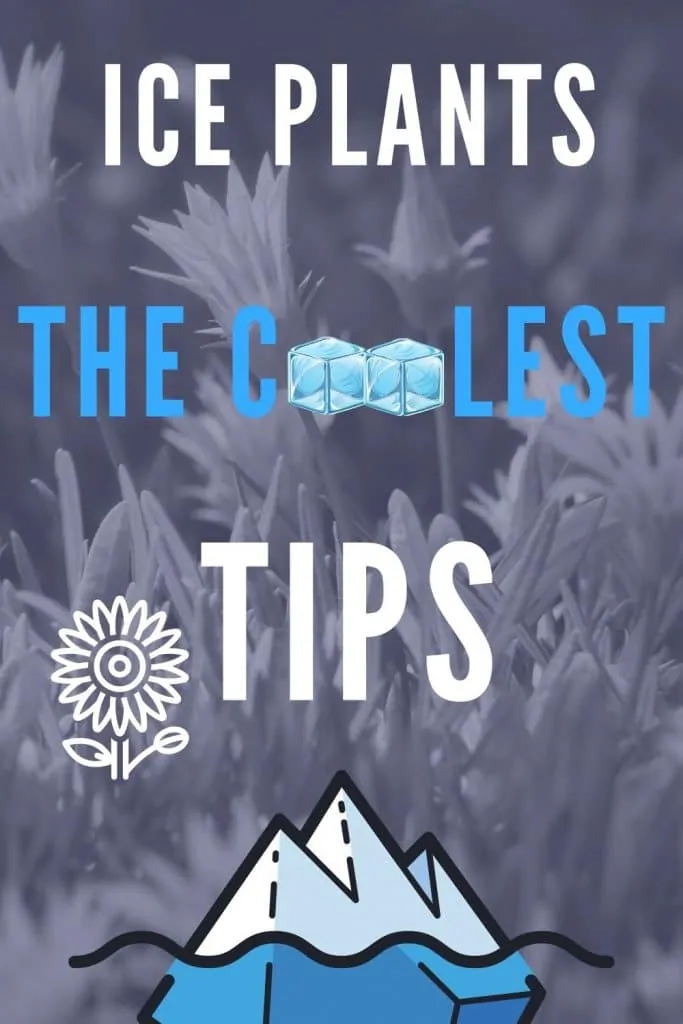
FAQ
Do Ice Plants come back every year?
The Ice Plant is known for dying off if they live in an extremely cold area. They can grow back in these situations, but fortunately you don’t have to worry about that for an indoor individual.
How fast does an Ice Plant spread?
These succulents can cover a fair amount of ground for their size. They can grow to spread out as much as four feet across. This generally only takes a few short months, but they won’t get much bigger.
Can you eat the leaves of an Ice Plant?
Succulents, such as Aloe have been used for a multitude of reasons. The Ice Plant is the same way. Their leaves are safe for both humans and animals alike. Some people will use them in salads, while others can make them into teas.
The Icy Conclusion
Ice plants are pretty hardy. They don’t require much attention and extra fuss. Even so, you’ll want to monitor their daily needs. I have laid out the bare essentials to make it easy for you.

Daniel has been a plant enthusiast for over 20 years. He owns hundreds of houseplants and prepares for the chili growing seasons yearly with great anticipation. His favorite plants are plant species in the Araceae family, such as Monstera, Philodendron, and Anthurium. He also loves gardening and is growing hot peppers, tomatoes, and many more vegetables.

